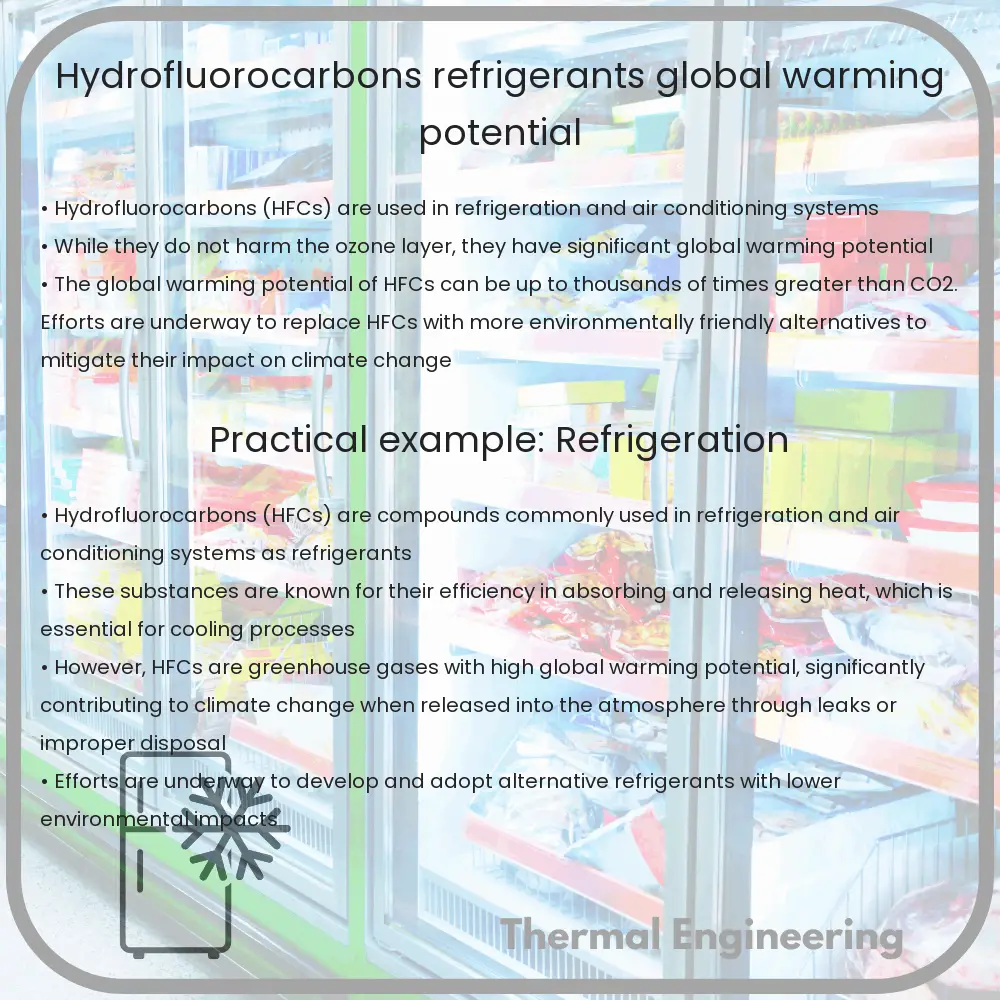A comprehensive exploration of Hydrofluorocarbons (HFCs), focusing on their usage as refrigerants and their significant Global Warming Potential (GWP).

Understanding Hydrofluorocarbons: Refrigerants and Their Global Warming Potential
Hydrofluorocarbons (HFCs) have become a critical component in modern refrigeration and air conditioning systems. As successors to chlorofluorocarbons (CFCs) and hydrochlorofluorocarbons (HCFCs), HFCs were initially hailed as a safer alternative due to their lower potential to deplete the ozone layer. However, their impact on global warming has become a growing concern due to their high Global Warming Potential (GWP).
What Are Hydrofluorocarbons (HFCs)?
HFCs are a class of synthetic chemicals primarily used as refrigerants. They are composed of hydrogen, fluorine, and carbon atoms. Unlike their predecessors—CFCs and HCFCs—HFCs do not contain chlorine, which is harmful to the ozone layer. Commonly used HFCs in the refrigeration and air conditioning industries include HFC-134a, HFC-143a, and HFC-125.
Global Warming Potential (GWP)
The Global Warming Potential is a measure of how much heat a greenhouse gas traps in the atmosphere compared to the same amount of carbon dioxide (CO2) over a specific period. CO2 is assigned a GWP of 1 as a reference point. HFCs, depending on their specific composition, can have a GWP several thousand times greater than CO2, making even small quantities significant contributors to global warming.
- HFC-134a: Commonly used in automotive air conditioning, HFC-134a has a GWP of 1,430 over a 100-year period.
- HFC-143a: Often used in refrigeration blends, this gas has a much higher GWP of 4,470.
- HFC-125: Also popular in refrigeration applications, HFC-125 has a GWP of 3,500.
Environmental Impact and Regulation
HFCs, due to their high GWP, are potent contributors to the greenhouse effect, which leads to global warming and climate change. This has prompted international actions such as the Kigali Amendment to the Montreal Protocol. The Kigali Amendment, agreed upon in 2016, aims to gradually phase down the production and consumption of HFCs. More than 100 countries committed to reducing 80% of their HFC use by 2045, thereby averting up to 0.4 °C of global warming by the end of the century.
Alternatives to HFCs
With the push to phase out HFCs, the industry is exploring various alternatives that have lower GWPs. Ideal substitutes offer effective cooling properties without contributing significantly to climate change. Some of the promising alternatives include:
- Hydrofluoroolefins (HFOs): These compounds, such as HFO-1234yf, have significantly lower GWPs (less than 10) compared to HFCs.
- Natural Refrigerants: Substances like ammonia (NH3), carbon dioxide (CO2), and hydrocarbons (propane, isobutane) are effective refrigerants that often have negligible GWPs.
Transitioning to these alternatives involves considering various factors including safety, cost, availability, and compatibility with existing systems.
Conclusion
While HFCs have played a crucial role in providing efficient refrigeration and air conditioning, their high global warming potential poses a significant environmental threat. The global commitment to phase down the use of HFCs and the search for viable, eco-friendly alternatives reflect the increasing awareness and proactive measures being taken to mitigate climate impact and safeguard the planet for future generations.
The phase-out of HFCs exemplifies how international cooperation and technological innovation can address complex environmental challenges, moving towards a more sustainable and environmentally responsible future.